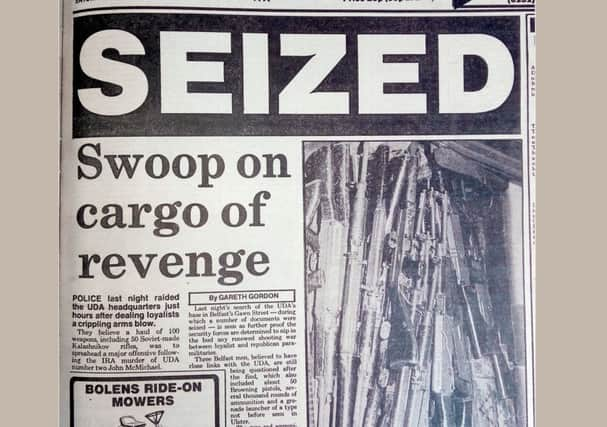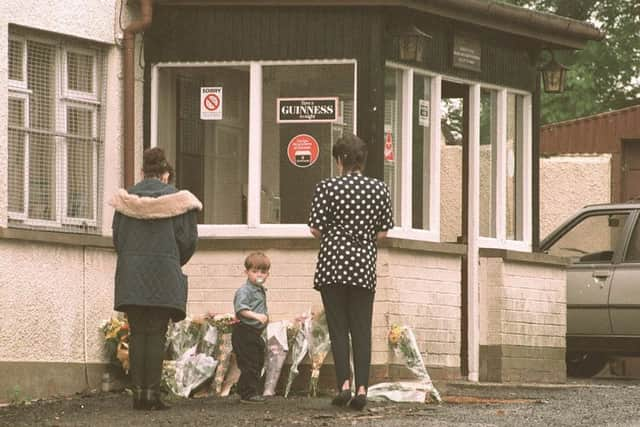Loughinisland: Speculation ‘passed off as facts’ caused confusion


Some of the most highly publicised claims of police wrongdoing relate to the eventual destruction of the UVF killers’ getaway car, the alleged “ballistic trail” linking the murder weapon to one specific arms shipment, and allegations that police showed a lack of commitment in their pursuit of the murder gang.
However, a number of former officers have now spoken out to counter what they claim is an “avalanche of misinformation”.
Advertisement
Hide AdAdvertisement
Hide AdOne explains how the allegations around the timing of arrests, do not bear scrutiny when examined in light of standard police practices at that time, while the former sub-divisional commander for the Loughinisland area reveals how a mystery letter writer – whose evidence was supposedly ignored – was in fact identified and interviewed at length.


Former ACC Raymond White challenges the ombudsman Dr Michael Maguire’s capacity to definitively assert that the VZ58 rifle used by the UVF killers was from a shipment imported into Northern Ireland in the late 1980s – of which the majority were seized by police in Belfast and Portadown – clearing the way for Dr Maguire to focus much of his investigation on events that took place many years before Loughinisland.
The retired officers are of the view that it is misleading to elevate such a claim beyond the level of speculation, as it discounts the likelihood that even a single additional rifle was subsequently smuggled into the country over the intervening six-year period.
In his report, Dr Maguire said the serial number of the VZ58 used at Loughinisland was “in between” numbers recovered in Portadown, but added that the “seized VZ58s had a wide range of often non-consecutive serial numbers”.
Advertisement
Hide AdAdvertisement
Hide AdMr White said: “Proclaiming that link as evidentially proven was vital as it opened the door to a much broader investigation which again, although it did not identify any police officer as being involved in any criminal act or wrongdoing, is used to paint a picture of ‘concerns’ around ‘collusion’ without providing evidence as to the nature of such collusion, or identifying who was involved in the same and, most importantly, how it directly related to the UVF murders at Loughinisland.
“He uses a form of words that induces those susceptible to such a belief of collusion, into making for example a false deduction – that the ombudsman had proved the rifle was part of that shipment.”
Mr White added: “Particularly as after years of investigation, nothing in the report indicates that at any stage the minimum threshold – that of reasonable suspicion required to carry out an arrest for questioning, let alone the compilation of an evidence based report recommending charges to the PPS – had ever been reached.”
Retired chief superintendent Ronnie Hawthorne said the significance of an anonymous letter – containing claims the author had inside knowledge of the murders – has also been overstated.
Advertisement
Hide AdAdvertisement
Hide AdHe said: “It was from a scorned woman exacting revenge on a husband she suspected of cheating. She wrote the letter but it had no details of when terrorism was being discussed or actually carried out. The letter and [an anonymous telephone] call supported the available intelligence but was not backed up with a statement of evidence.
“The detectives who interviewed the letter-writer told me that they felt at times she might make a statement, which would then have given us something to build a case around. She was interviewed extensively, and there was great optimism at one stage that she would provide actual evidence on the killers.
“The criticism in the report is that that alone should have led to a prosecution. But she did not go far enough. There is a general lack of understanding around this.”
Mr Hawthorne added: “I don’t think there’s any dispute that she wrote that letter. It’s been said that letter wasn’t tested forensically for fingerprints but we were all happy enough it was her who wrote the letter.
Advertisement
Hide AdAdvertisement
Hide Ad“We just couldn’t encourage her to make a written statement that could have provided us with the necessary evidence to take it further.
“The families were given false hope this information amounted to a significant breakthrough.”